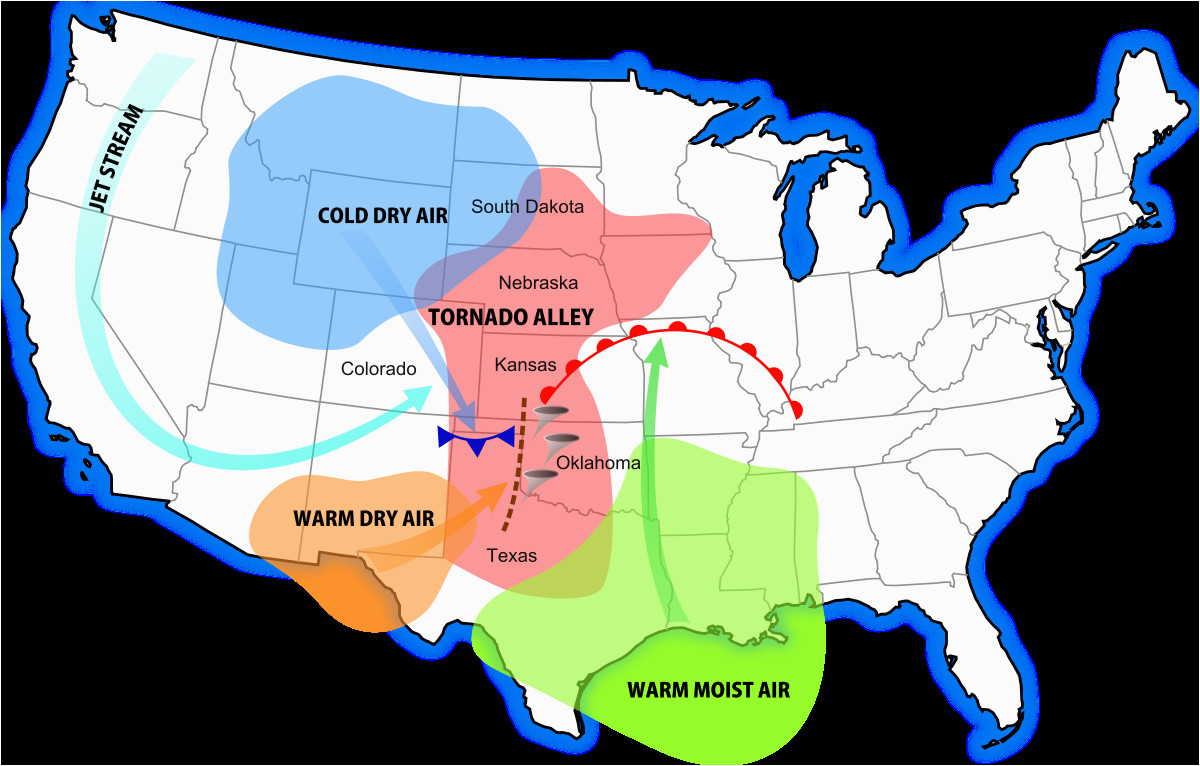With its vast open landscapes and unpredictable weather patterns, Texas is no stranger to tornadoes. One question that often arises is: Where is Tornado Alley in Texas? Known for its tornado-prone regions, Tornado Alley stretches across the central United States, with some of the most active tornado activity occurring in the states of Texas, Oklahoma, and Kansas. In this article, we will focus specifically on where Tornado Alley intersects with the Lone Star State. So, let’s explore the geography and characteristics of Tornado Alley in Texas.
The Formation of Tornado Alley
In order to understand the location of Tornado Alley within Texas, it’s important to grasp how this meteorological phenomenon comes into existence. Tornado Alley is a region where warm, moist air from the Gulf of Mexico collides with dry, cold air from the Rocky Mountains. This collision creates the ideal conditions for the development of severe thunderstorms and tornadoes.
Tornado Alley in Texas
When it comes to Texas, Tornado Alley is primarily situated in the eastern and central parts of the state. Here are the key areas within Texas that are typically considered part of Tornado Alley:
1. North Texas
North Texas, including cities such as Dallas, Fort Worth, and Arlington, is particularly susceptible to tornado activity. This region lies at the intersection of warm, moist air from the Gulf of Mexico and cold, dry air from the north. The flat terrain and favorable atmospheric conditions make North Texas a hot spot for tornadoes.
2. West Texas
While West Texas is not as widely recognized as North Texas in terms of tornado frequency, it still experiences its fair share of tornadoes. Cities like Lubbock and Amarillo are included in this region. West Texas sees tornadoes mostly in the spring and early summer months, when strong cold fronts collide with warm, moist air.
3. Central Texas
Central Texas, which encompasses areas like Austin and San Antonio, also falls within Tornado Alley. Here, the geography is slightly different, as hills and forests dominate the landscape compared to the flatter terrain in North and West Texas. However, when the right conditions align, tornadoes can still occur in Central Texas.
Factors That Make Texas Prone to Tornadoes
Several factors contribute to the heightened tornado activity in Texas, particularly within Tornado Alley. Understanding these factors can shed light on why tornadoes are more prevalent in certain regions of the state.
1. Geography
Texas is a vast state with diverse topography. The flat plains in the north and west, coupled with the warm, moist air from the Gulf of Mexico, create a prime breeding ground for tornadoes. Additionally, the state’s proximity to the Rocky Mountains plays a role, as the collision of air masses from different directions influences tornado formation.
2. Climate
Texas experiences a continental climate, characterized by hot summers and mild winters. This stark contrast in temperature between seasons contributes to the instability of the atmosphere, providing the necessary conditions for the formation of severe thunderstorms and tornadoes.
3. Tornado Super Outbreaks
Texas has witnessed some of the most devastating tornado outbreaks in history. The infamous 1974 Super Outbreak, for example, resulted in over 30 tornadoes across the state. These large outbreaks serve as a reminder of the ever-present threat Tornado Alley poses to Texas residents.
Preparing for Tornadoes in Texas
Living in Tornado Alley means being prepared for the possibility of tornadoes. Here are some essential tips to help you and your family stay safe:
1. Create an Emergency Plan
Develop an emergency plan that includes designated meeting places, emergency contact information, and instructions on what to do during a tornado warning. Ensure that all family members are aware of the plan and practice it regularly.
2. Build a Tornado Kit
Assemble a tornado kit that includes essential supplies such as a first aid kit, non-perishable food, water, flashlights, batteries, and a battery-powered weather radio. Keep your kit easily accessible in case of a sudden tornado warning.
3. Stay Informed
Pay attention to local weather forecasts and stay informed about any severe weather alerts or tornado warnings in your area. Having a reliable weather app or a battery-powered weather radio will help you stay updated during a tornado threat.
4. Seek Shelter
During a tornado warning, seek shelter immediately. Go to a safe place in your home, such as a basement or an interior room on the lowest level. If you live in an area prone to tornadoes, consider investing in a storm shelter or safe room for added protection.
Frequently Asked Questions
Now that we have explored the location of Tornado Alley in Texas, let’s address some common questions related to tornadoes in the Lone Star State:
Q: How often do tornadoes occur in Texas?
A: Texas experiences an average of about 150 tornadoes each year, making it one of the most tornado-prone states in the United States.
Q: Can tornadoes occur at any time of the year in Texas?
A: While tornadoes are most common in the spring months of March, April, and May, they can occur at any time of the year in Texas. However, tornado activity tends to decrease during the winter months.
Q: What should I do if I encounter a tornado while driving?
A: If a tornado approaches while you are driving, do not try to outrun it. Instead, find a sturdy building or shelter nearby. If that is not possible, pull over, park your vehicle, and stay low with your seatbelt on. Protect your head and neck with your hands or a blanket if available.
Final Thoughts
Living in Tornado Alley in Texas means being prepared for the unpredictable nature of tornadoes. By understanding the geographical and meteorological factors that contribute to tornado formation, as well as taking necessary precautions, you can better protect yourself and your loved ones. Remember, knowledge and preparedness are key when it comes to managing the risks associated with tornadoes in Texas. Stay safe and informed!
